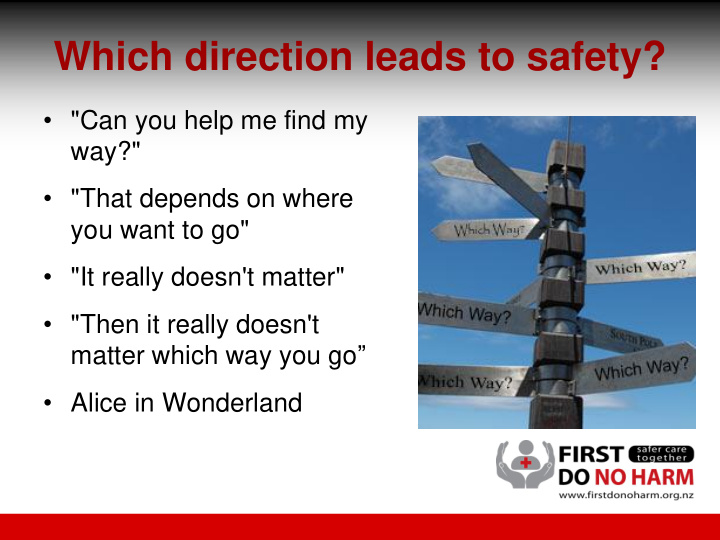



Which direction leads to safety? • "Can you help me find my way?" • "That depends on where you want to go" • "It really doesn't matter" • "Then it really doesn't matter which way you go ” • Alice in Wonderland
Transformation to safer care • Develop a patient-centred safety culture • Improvement aims and measures • Building will, ideas and execution “ To implement sustainable and effective change, health professionals must understand evidence- based measures combined with a knowledge of improvement science ” .
What stops us transforming? • The status quo – business, its hold on the purse strings, no ‘ space ’ even to look forward • Interdependence – the transformation we seek requires cross sector collaboration…so not in one person ’ s control • Still large gaps in will, capability to execute the changes needed • Improve vs transform …we are sill often trying to improve the old…when do we stop and design the new?
Making transformation possible • Reprioritise – turn away from the status quo…something more attractive • Collaborate - lead the way, share stories, persuade others to join • Educate – identify knowledge and skill gaps…fix them • Reconcile improve vs transformation – new knowledge and skills – leaders who can improve the current processes - recognise and seize the time to transform rather than improve
First, Do No Harm strategy • Raising awareness of patient safety • Helping to build capacity and capability • Use of a formal improvement methodology to guide improvement activities • Strong linkages and partnership with other work programmes (i.e. Health Quality and Safety Commission, HOP Network) to ensure alignment with national and regional programmes
What First, Do No Harm have discovered on this journey • Front – line leadership is critical • Senior leaders remove obstacles • Ability to run Plan-Do-Study-Act (PDSA) cycles – small and frequent • Process to support the work and clinical staff • Value of teams • Importance of measurement - cannot improve what is not being measured • Need to build capacity and capability for teams to undertake improvement work • Change is challenging – prioritisation of effort is key
Recommend
More recommend